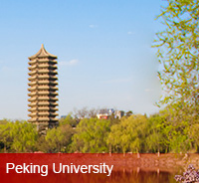New Development Philosophy and Pattern
May 12-2021
The China-EU investment treaty might be hitting some snags at the moment, but Prof. Yu Miaojie of the NSD expects a resumption of bilateral talks in a few months’ time, for expanding such a comprehensive deal would benefit the European economy.
Politically the EU will lean towards the US, but economically it will edge closer to China, said Prof. Yu, who is also the CCP Party Chief and Deputy Dean of the NSD. Should the deal get greenlighted on both sides, China is expected to open up to European investors some upstream industries currently dominated by SOEs, as well as manufacturing, finance, real estate, and international maritime shipping, while the EU will roll out the welcome carpet for Chinese investors into its renewable energy industry and retail and wholesale.
The analysis is part of his speech at a business forum in which he expounds on the key features of China’s new development pattern and philosophy.
The latest IMF estimate puts China economic growth in 2021 at 8.4%, crediting its pulling power for the world economy. The core feature of China’s new development pattern, according to Prof. Yu, is high-quality growth, in the forms of higher product added value, quality improvement, rising corporate total-factor productivity, industrial upgrading and regional industrial clustering. From a macro perspective, the second industry accounts for 40% or so of the economy and the tertiary industry has gradually increased its share to 50%, a reflection of high-quality growth.
In terms of new development philosophy, five key words rule the roost: innovation, coordination, sharing, green, and opening up. For example, ‘coordination’ mainly concerns urban-rural coordination and regional coordination. Prof. Yu believes that one of the priorities will be to narrow the urban-rural divide by rejuvenating the countryside. He also cautions against urbanization without industrialization, which can result in lack of jobs and birth of slums.
The Dual Circulation, officially pronounced in May last year, requires the coordinated and concurrent development of internal circulation and external circulation. Internally, productive factors should be subject to marketized allocation through the creation of a level playing field for firms of all ownership types; a comprehensive new pattern for opening up should be constructed to facilitate trade liberalization, improve business environment, and simplify investment procedures; active fiscal policies and prudent monetary policies should be deployed to spur domestic demand and enhance financial consumption.
Externally, it’s important to recognize that the fundamental nature of globalization remains unchanged. Besides the Belt and Road initiative, China can promote the external circulation through RCEP, the upcoming CPTPP, as well as CAI with EU. Since the US has defined China as its long-term competitor, limited cooperation between the two countries might be the norm, for example in such fields as climate and energy.







